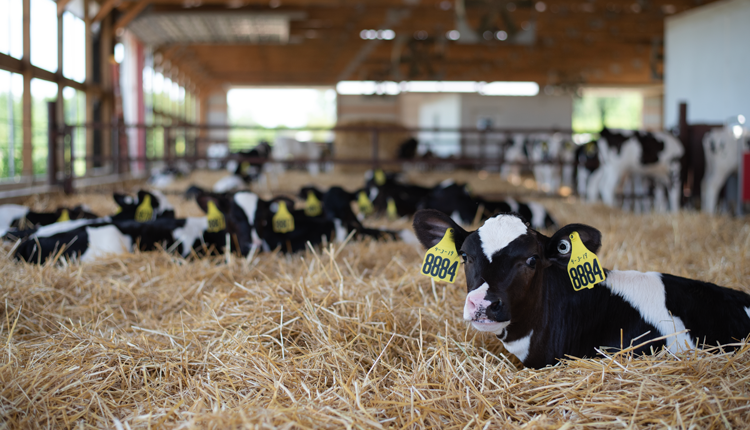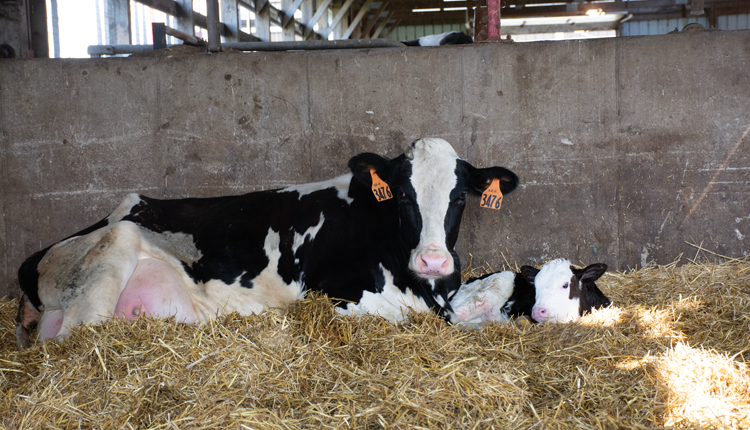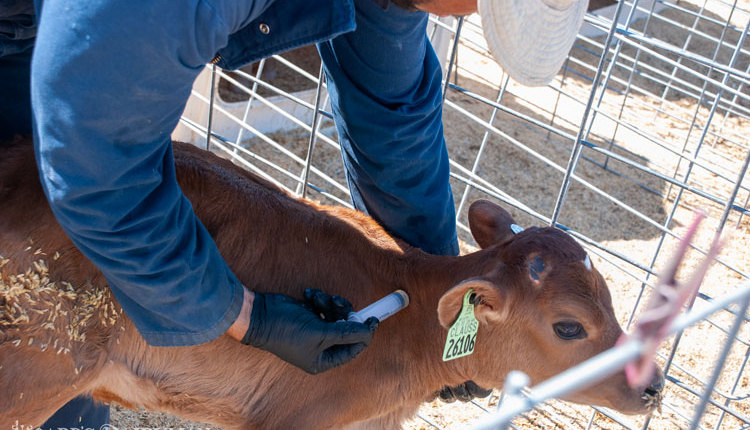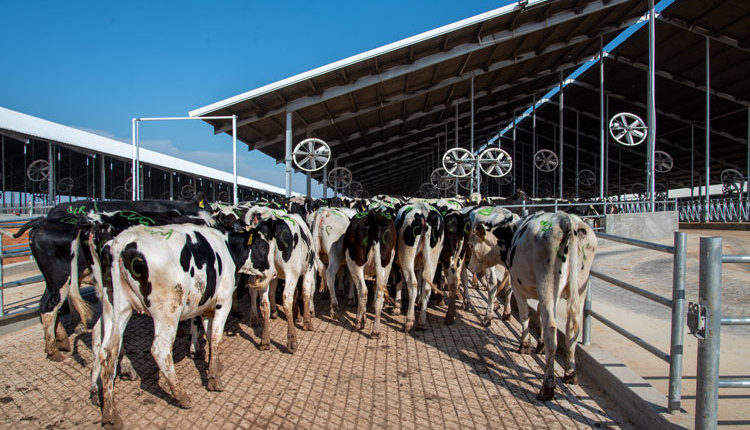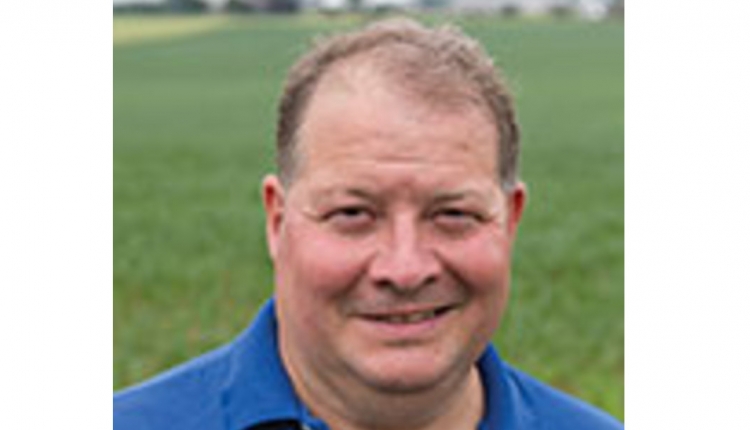The author is a partner in Maria Stein Animal Clinic, Maria Stein, Ohio.
Paul called in the early morning with a cow that was down with milk fever. I rolled onto his dairy within the hour and went directly to his fresh pen. Cow 586 was recumbent with several signs of hypocalcemia.
Most of our dairies have someone on-site who can treat these types of cases. Paul never had taken the time to develop this skill, but his son, Jason, was quite proficient. Jason was on his honeymoon, so I treated 586. Paul checked in as 586 rose to her feet after treatment and made the comment that at least he didn't lose two.
I must have looked puzzled as he went on to explain that the calf was fine late last night when he checked the barn, but it looked like 586 had stumbled and laid on the heifer calf through the night. I mentioned that we had several dairies that had created a place for calves to go immediately after birth until they could be moved to their regular home. Paul was interested in how that worked, so we had a discussion. I made a note to discuss this again with Jason, but the seed would be planted with Paul.
Healthy calves start trying to stand within 15 minutes of birth. These attempts are never successful and are accompanied by rolling in the bedding and diving into it, as well. If the bedding has any cow manure, as all birthing pens do, the calf is now exposed to Johne's, BVD, Cryptosporidia, Salmonella, and E. coli.
Most calfhood diseases start in the birthing pen. The skin exposure is bad enough as it moves with the calf to contaminate the next place the calf lives, continuing exposure. Internal exposure when the calf swallows manure in its attempts to stand may be worse than external exposure for several reasons. Of course, the ingested manure is a contaminant full of pathogens.
The earliest material to enter the digestive tract speeds up the rate of gut closure when immunity no longer will be absorbed across the intestinal lining. If that first material is colostrum, the immunity is well absorbed and the calf is nourished. If the first material is manure, the colostrum that, hopefully, comes soon is absorbed less well so we have less immunity and more pathogen challenge.
Getting calves away from cow manure as quickly as possible is the first important management step in a calf's life. Research at the University of Minnesota showed that calves that were removed from their dams in less than 6 hours had half the mortality of those exposed to adult manure for 12 hours. Calves exposed for 48 hours had double the mortality of those exposed for 12.
Moving calves to a clean zone should be easier to accomplish on dairies that have 24-hour care than those that have less staff. Dairies that do not have 24-hour care can benefit from keeping the birthing area as clean as possible, but this presents some challenges.
Paul could have saved the calf that got laid on if he had a convenient place to put newborns near or in the calving area. The creativity of dairy farmers who understand this concept impresses me. Clean calf zones have evolved from a gate across the corner of the calving pen to round bale feeders that cows can reach into and lick the calves to drying areas with a dedicated pen. These pens are cleaned weekly so there is little opportunity for buildup of pathogens.
One of the biggest challenges on dairies that don't have 24-hour care is creating a clean birthing area. We know well the difficulties of predicting when a cow will calve. Of course, clean fresh pasture, when available, is the ideal calving area followed by a very well-bedded calving pen that has good footing. I have observed that well bedded looks different depending upon who is doing the bedding. What appears to be clean on top may be just one hoof placement away from bringing to the surface some highly contaminated material.
The variety of successful and unsuccessful calving pens is tremendous, and they may all look the same to the casual observer. You may choose to ask your veterinarian how your calving pen could be improved. Tell him or her that you really want to create a better environment for calves to be born into. The next challenge is to observe the progress of calving frequently. There is a balance between having the calving area in a convenient location so caretakers can easily make note of progress and having calvings be disrupted by too much commotion.
It has been well demonstrated that moving cows to a calving pen before active labor can disrupt the calving process, resulting in more stillbirths. Thus, many dairies wait until feet or very significant mucous are showing before cows are moved to calving pens. Moving cows more than a few days before calving causes drops in feed intake and leads to more metabolic disease. Managing the birth of our herd's next generation is a challenging task and always leaves room for improvement.
090925_584
Paul called in the early morning with a cow that was down with milk fever. I rolled onto his dairy within the hour and went directly to his fresh pen. Cow 586 was recumbent with several signs of hypocalcemia.
Most of our dairies have someone on-site who can treat these types of cases. Paul never had taken the time to develop this skill, but his son, Jason, was quite proficient. Jason was on his honeymoon, so I treated 586. Paul checked in as 586 rose to her feet after treatment and made the comment that at least he didn't lose two.
I must have looked puzzled as he went on to explain that the calf was fine late last night when he checked the barn, but it looked like 586 had stumbled and laid on the heifer calf through the night. I mentioned that we had several dairies that had created a place for calves to go immediately after birth until they could be moved to their regular home. Paul was interested in how that worked, so we had a discussion. I made a note to discuss this again with Jason, but the seed would be planted with Paul.
Healthy calves start trying to stand within 15 minutes of birth. These attempts are never successful and are accompanied by rolling in the bedding and diving into it, as well. If the bedding has any cow manure, as all birthing pens do, the calf is now exposed to Johne's, BVD, Cryptosporidia, Salmonella, and E. coli.
Most calfhood diseases start in the birthing pen. The skin exposure is bad enough as it moves with the calf to contaminate the next place the calf lives, continuing exposure. Internal exposure when the calf swallows manure in its attempts to stand may be worse than external exposure for several reasons. Of course, the ingested manure is a contaminant full of pathogens.
The earliest material to enter the digestive tract speeds up the rate of gut closure when immunity no longer will be absorbed across the intestinal lining. If that first material is colostrum, the immunity is well absorbed and the calf is nourished. If the first material is manure, the colostrum that, hopefully, comes soon is absorbed less well so we have less immunity and more pathogen challenge.
Getting calves away from cow manure as quickly as possible is the first important management step in a calf's life. Research at the University of Minnesota showed that calves that were removed from their dams in less than 6 hours had half the mortality of those exposed to adult manure for 12 hours. Calves exposed for 48 hours had double the mortality of those exposed for 12.
Moving calves to a clean zone should be easier to accomplish on dairies that have 24-hour care than those that have less staff. Dairies that do not have 24-hour care can benefit from keeping the birthing area as clean as possible, but this presents some challenges.
Paul could have saved the calf that got laid on if he had a convenient place to put newborns near or in the calving area. The creativity of dairy farmers who understand this concept impresses me. Clean calf zones have evolved from a gate across the corner of the calving pen to round bale feeders that cows can reach into and lick the calves to drying areas with a dedicated pen. These pens are cleaned weekly so there is little opportunity for buildup of pathogens.
One of the biggest challenges on dairies that don't have 24-hour care is creating a clean birthing area. We know well the difficulties of predicting when a cow will calve. Of course, clean fresh pasture, when available, is the ideal calving area followed by a very well-bedded calving pen that has good footing. I have observed that well bedded looks different depending upon who is doing the bedding. What appears to be clean on top may be just one hoof placement away from bringing to the surface some highly contaminated material.
The variety of successful and unsuccessful calving pens is tremendous, and they may all look the same to the casual observer. You may choose to ask your veterinarian how your calving pen could be improved. Tell him or her that you really want to create a better environment for calves to be born into. The next challenge is to observe the progress of calving frequently. There is a balance between having the calving area in a convenient location so caretakers can easily make note of progress and having calvings be disrupted by too much commotion.
It has been well demonstrated that moving cows to a calving pen before active labor can disrupt the calving process, resulting in more stillbirths. Thus, many dairies wait until feet or very significant mucous are showing before cows are moved to calving pens. Moving cows more than a few days before calving causes drops in feed intake and leads to more metabolic disease. Managing the birth of our herd's next generation is a challenging task and always leaves room for improvement.
090925_584

